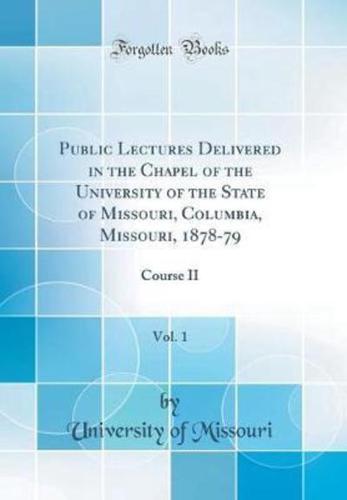Publisher's Synopsis
Excerpt from Public Lectures Delivered in the Chapel of the University of the State of Missouri, Columbia, Missouri, 1878-79, Vol. 1: Course II
Believing that the threefold relation existing be tween themselves, the students under their care and the state, demanded something more than the ordinary class room work at their hands, the members of the Faculty of the University of Missouri two years ago determined to prepare a series of lectures, illustrative of the special ties of the various departments, and sufficiently popular in character to be attractive not only to the undergrad nates, but also to the public at large. The first course, delivered in the University Chapel during the winter of 1877-78, was pronounced so successful that the Faculty felt encouraged to enter upon a second, and this, in turn, was received with indications of popular approval so flattering in character that it was resolved to publish the entire second series. This volume is the result of that determination. The lectures herein contained, while de signed primarily for the students of the University, nev ertheless it is believed do not lack certain elements of popularity which render them, at least in some de gree, adapted to the wants of the reading public. To that public this book is now presented with the hope that the original purpose of the lectures will be held in remembrance, and with the expectation that succeeding volumes will prox e more worthy of the appreciation al readv so kindly manifested by the friends of the Univer sity m behalf of this first eflbrt. About the Publisher Forgotten Books publishes hundreds of thousands of rare and classic books. Find more at www.forgottenbooks.com This book is a reproduction of an important historical work. Forgotten Books uses state-of-the-art technology to digitally reconstruct the work, preserving the original format whilst repairing imperfections present in the aged copy. In rare cases, an imperfection in the original, such as a blemish or missing page, may be replicated in our edition. We do, however, repair the vast majority of imperfections successfully; any imperfections that remain are intentionally left to preserve the state of such historical works.























